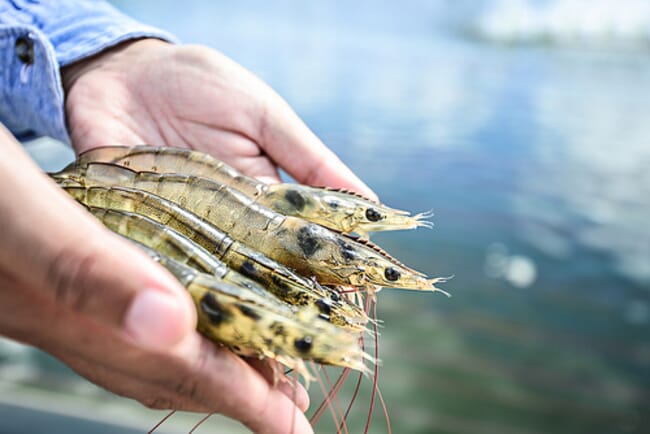
More than 25 major retailers and seafood companies and the Sustainable Fisheries Partnership (SFP) have signed the letter, which was sent to the governments of China, India, Indonesia, Thailand and Vietnam.
“Governments need to take action now to stop disease outbreaks in shrimp farms,” said Anton Immink, aquaculture director at SFP. “Disease disrupts the reliability of supply chains, threatens seafood sustainability and jobs, and continually costs the industry billions of dollars each year.”
The companies and trade associations signing the letter include: AquaStar, Beaver Street Fisheries, Chicken of the Sea, Fortune International, HighLiner Foods, Hilton Seafood UK, IDH the Sustainable Trade Initiative, Labeyrie Fine Foods, Lyons Seafoods, Marks and Spencer, Sainsbury’s, Seafresh Group, Sunnyvale Seafood, Sustainable Fisheries Partnership, Tesco, The Co-op, The Fishin’ Company, Waitrose & Partners, and the UK Seafood Industry Alliance.
Given the major supply chain disruptions and massive economic losses caused by diseases that spread rapidly across Asia in 2012 and 2013, the companies strongly appealed to governments to get ahead of the situation this time. All major shrimp producing countries have already committed to follow international guidelines for necessary controls issued by the UN Food and Agriculture Organization (FAO) and the World Animal Health Organization (OIE).
“Acting now will help to prevent a repeat of the chronic economic impacts associated with established diseases and ultimately lead to a more resilient and robust shrimp industry,” wrote the companies. “The economic costs of investing in good health control systems, best management practices in farms and hatcheries, epidemiological analysis, and emergency response planning is minimal when compared to the tens of billions of dollars that diseases cost the industry every year.”
The risks to shrimp farms are also magnified by the COVID-19 pandemic, according to SFP. International supplies of good quality broodstock to hatcheries have been limited by transportation disruptions. As the international market for shrimp picks up, increased demand for juvenile shrimp may overshadow proper inspection and controls. There is no direct danger to consumers from these diseases, but the loss of income impacts millions of farmers’ livelihoods.
More than five million tonnes of shrimp are farmed around the world. It is America’s favourite seafood and is consistently among the top five seafood imports in Europe. The FAO and WorldFish estimate that five million people are employed directly on shrimp farms and an additional five million in related supply chains.
A link to the letter is here.



